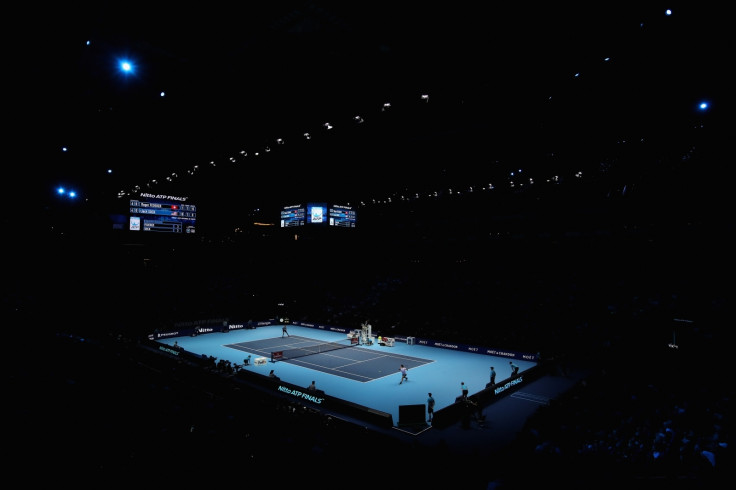Roger Federer adulation and Rafael Nadal absence highlights decline of the ATP Finals in London
Tennis' end of season shindig is a damp squib without a handful of the world's best players.
The ATP finals, the climax to the men's professional tennis season, have become a fixture at the O2 Arena in London since 2009 after almost 40 years of name changes and a nomadic search for a permanent home. And it has enormously helped the event's standing that a Brit has been a serious contender throughout its London residency.
But minus the local hero – Andy Murray is struggling with a long term injury – this year's ATP Finals were certain to lack some of the excitement and passion found in recent years. Shorn also of Novak Djokovic, the casual fan would only really find interest in this century's greatest sporting rivalry, Roger Federer vs Rafael Nadal. When Nadal pulled out too, all bets were off.
Alongside two of the greatest of all time, several of the next rung down of tennis stars are absent: Stan Wawrinka, Kei Nishikori and Milos Raonic – all of whom featured last year. The finals, whilst offering prestige, healthy appearance payments and plenty of ranking points [1500 to the unbeaten winner], come at the end of a long, hard season and at the beginning of a brief period when a player has time for real recuperation
Those who make up this year's competition then are rather more for the cognoscenti: German Alexander Zverev, who is currently ranked number three in the world due to the ongoing injury problems of Murray and Djokovic; Bulgarian Grigor Dimitrov; American Jack Sock; and Belgian David Goffin. These players may go on to great things, but they are a long way from there yet.
Following Nadal's withdrawal after just one match, his replacement was Pablo Carreno Busta, a 26-year-old Spaniard who has just one Grand Slam semi-final appearance to his name. Hardly a curriculum vitae to thrill the casual viewer, but a necessary addition due to the unique nature of the tournament: a round-robin stage guaranteeing at least three matches per player before the knock out rounds and ensuring that there is always a singles match in each session for the punters.
Looking after the customers is a high priority for this money-spinning event. Tickets are not cheap but the O2 has consistently sold out during its hosting of the event. The venue also provides not inconsiderable corporate hospitality opportunities, including a tier of luxury boxes around the arena.
But in the first eight sessions of this year's tournament only two were all-ticket, and not unexpectedly they were the ones involving 19-time grand slam champion and global marvel Federer. The crowds for the other sessions have not been catastrophic, but were they to become a pattern it could spell trouble.
For [only] two weeks every summer Britain goes tennis-mad and Wimbledon's crowds are legendary. But for the other 50 weeks of the year British interest in tennis has been almost entirely dependent upon whether there is a home-grown player challenging for Grand Slams. Outside of those windows – and Murray's career masks much – Britain's feelings towards the sport is somewhat tepid. Outside of the corporate sponsors, upmarket brands and the small cohort of hardcore fans, that is. The ATP Finals have created another week when tennis is high on the British sporting agenda.
Aside from Wimbledon and the pre-tournament tune up events at Queen's, this event is the only chance to see the sport's finest on British shores. And the only opportunity to see them in an event that matters, playing against the other stars of the sport. Watching tennis between a top player and an also-ran is mostly a dispiriting experience of one-sidedness. The ATP finals showcase the best against the best and regularly produces top quality competition.
Before 2009, the ATP's end of season tournament had been hosted in a number of cities around the world, with only New York and Frankfurt boasting long residencies.
Until this year, the ATP World Tour Finals, as they were previously known, had been sponsored by Barclays bank in London. This year is the first of a four-year deal with Japanese company Nitto. The contract to host this event at the O2 in Greenwich has also been extended until 2020.
But, given the ages and fitness histories of the sport's Big Four, will any of them still be playing in 2020? And, when they are gone, will tennis still have the same appeal? For now tennis fans are still soaking up every opportunity to see Federer and Nadal before they retire.
It is the burning question for the sport in general: will the fans still flock when this golden generation is gone? Even more pertinently for an event staged in Britain, will the fans still come when Murray mania has subsided?
Tennis has a history of finding new stars following the demise of great champions. While tennis authorities fret about a post Federer/Nadal future, other stars will surely emerge. But, given how long Britain waited for a champion like Murray, how sure can we be that his successor will emerge any time soon? And, without a competitive Brit at the ATP Finals, how secure is London as its venue?























